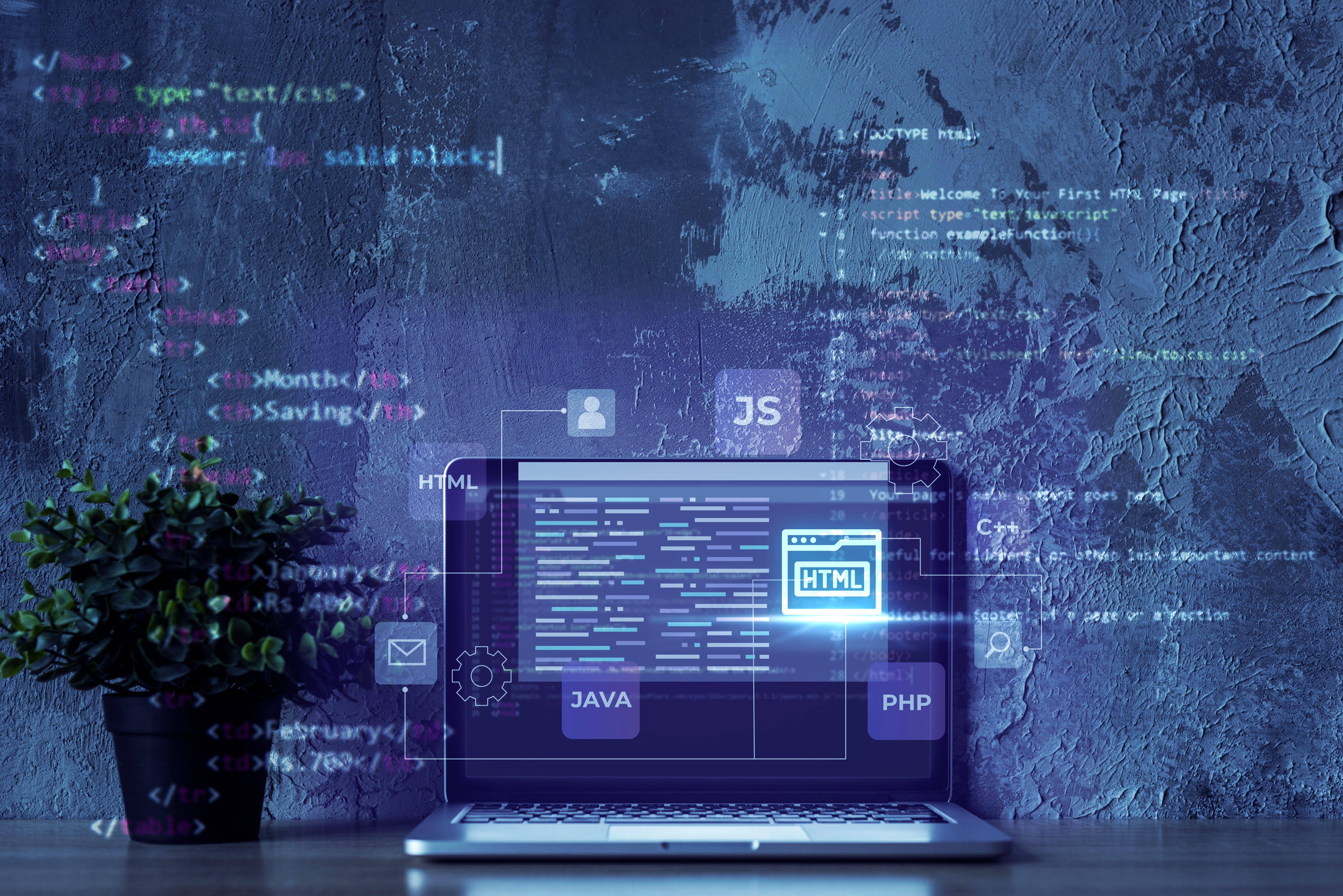
Low-code and no-code platforms have ignited a transformative with their scalability and agility. As revealed by Gartner, by 2025, 70% of new applications developed by enterprises will use low-code or no-code technologies [1]. The incorporation of AI, such as ChatGPT, is rapidly becoming the norm, despite the hurdles surrounding AI transparency and governance.
AI & Low Code: The best of both worlds
The convergence of AI and low code is evident across various avenues, and these two technologies can seamlessly co-exist. Thus, developers can leverage AI-powered low-code to:
- Generate code suggestions: The synergy between AI and low-code programming is most apparent in AI-assisted code development (AICD). LLMs can comprehend and interpret human language by presenting AI models with natural language prompts encompassing questions, statements, or instructions. Low-code makes web development easy for non-IT experts, as AI can suggest codes in real time. For instance, when a user starts typing a function call, the AI can predict and suggest the available functions, their parameters, and potential usage examples.
- Debug and detect errors: AI is a helpful tool in debugging processes by actively identifying issues and offering constructive insights. Its functionality goes beyond merely highlighting code errors. AI can verify compliance with coding best practices and recommend optimizations to enhance performance. This proactive support simplifies the coding process, resulting in more organized and optimized codebases.
- Build AI-enabled applications: As low-code components become more attuned to AI, advancements can be made, such as understanding human language, talking to applications, and recognizing images. For example, developers can quickly create a chatbot that can hold conversations by simply dragging and dropping an AI-enabled function. This combination smoothly blends the advantages of AI with the user-friendly nature of low code, empowering developers to design smart applications with more advanced features.
Achieving more accuracy in less time
LLMs such as ChatGPT introduce code-free capabilities that expedite the programming process. These platforms play a crucial role in democratizing software development, potentially as a gateway to broadening accessibility to programmatic AI and AI-integrated development. Their strategic application promises substantial efficiency enhancements and time savings of up to 80%, depending on the project and its specific application [2]. Girish Mathrubootham, the founder and CEO of Freshworks, indicated that after utilizing AI to write code, the project's timespan accelerated from 8-10 weeks to under 1 week.
AI-powered low-code platforms can substantially expedite software development compared to traditional methods. AI can facilitate quick prototyping and iterative processes, allowing faster user feedback incorporation during the early stages of development. A notable 87% of chief innovation officers and IT professionals indicated that incorporating higher levels of AI and automation within low-code platforms would enhance their ability to leverage the platform's capabilities fully [3].
Lifting the burden of IT teams
- Access to Technical Expertise: Low-code AI software offers the advantage of configuring and deploying applications with minimal coding effort. These platforms commonly employ user-friendly features like drag-and-drop interfaces and pre-built components. Such tools empower individuals without in-depth data science knowledge to effectively implement solutions. The accessibility of these features serves as a bridge, allowing non-technical users to contribute significantly to the development process.
- Free-up resources: With AI-enhanced platforms, business users can create and modify applications independently, reducing the burden on IT teams. This allows IT departments to focus on more strategic and complex tasks.
- Innovation and Experimentation: AI-generated suggestions and code components catalyze fresh ideas and inventive solutions. These inputs often introduce perspectives that might not have been explored otherwise. This dynamic can spark an atmosphere conducive to experimentation, where creative solutions are pursued with renewed enthusiasm. A striking testament to AI's integration is reflected in the GitHub developer survey, which reveals that 92% of programmers have embraced AI tools in their workflows [4].
What should businesses keep in mind?
In the evolving landscape where AI and low-code intersect, tech leaders are advised to maintain a vigilant stance over the potential challenges:
Simplicity does not equal flexibility
Even as these technologies converge, the role of highly skilled data scientists remains critical. Their expertise becomes pivotal in navigating the complexities of AI integration, ensuring that the solutions are functional and tailored to specific organizational needs. Thus, organizations can take a strategic approach to bridge this gap between simplicity and flexibility. By strategically assigning data scientists to projects that demand sophisticated AI integration, organizations can retain expertise for future innovation.
Governance and innovation are inseparable
Maintaining a robust governance layer emerges as a pivotal strategy for business leaders. With the EU AI Act, the US AI Bill of Rights, and other regulations, governing AI systems is obligatory. Non-compliance with these regulations could lead to organizational burdens and substantial fines, where the heftiest fine can reach EUR 30 million or 6% of worldwide annual turnover [5]. This preparation mitigates adverse outcomes and ensures that AI systems are ahead of regulatory requirements.
Overcoming the fear of job displacement
The apprehension of AI replacing low-code coders is a valid concern. As low-code development involves streamlined and simplified coding processes, this can potentially result in job displacement for coders. Specifically, a survey indicated that 59% of respondents believe AI will replace programmers, while 41% think it won’t fully replace them [6]. However, it's important to recognize that coders perceive AI as a supplementary tool rather than a complete replacement for their skills. In the end, programmers still have to ensure the quality of the end product instead of AI.
Steering the path for future innovation
Despite ongoing challenges in the AI landscape within low-code development, businesses can leverage AI-enabled low-code to save more time and effort. According to Gartner's predictions, organizations that effectively implement AI transparency, trust, and security measures will witness a 50% enhancement in adopting AI models, attaining business objectives, and achieving user acceptance by 2026 [7]. By understanding the nature of low-code, companies can move forward to overcome the challenges of AI governance, job security, and low-code flexibility.






























